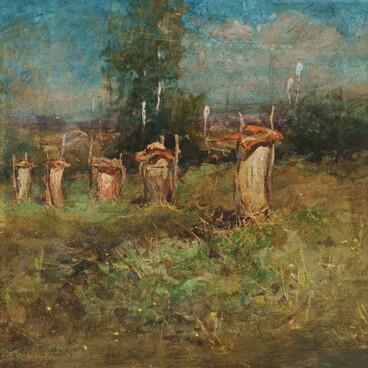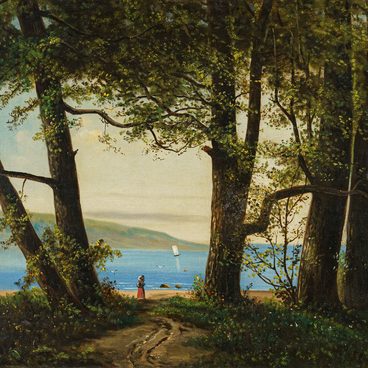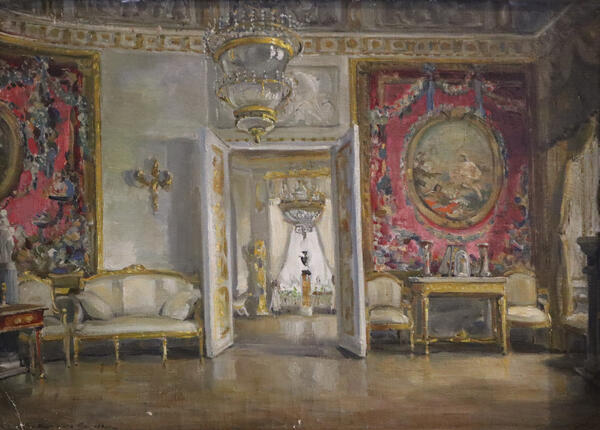Vasily Nikitich Kuchumov was an artist and scene designer who painted landscapes, interiors, and historical scenes. He was born in 1888. In 1916, he graduated from the Higher Art School of the Academy of Arts. During the years of study, he proved himself as a talented painter.
Vasily Kuchumov displayed his works at many exhibitions. He was a member of the Society of Independent Artists in Petrograd (1911–1914) and the “Tsekh” society. After 1917, he participated in exhibitions of the Association of Artists of Revolutionary Russia. Vasily Kuchumov was influenced by the artists of the “Mir iskusstva” (World of Art) association and adhered to their philosophical and aesthetic views.
During the Great Patriotic War, Vasily Kuchumov lived and worked in Leningrad. In a series of paintings and drawings, he depicted the tragedy of the war and the siege of Leningrad. In 1941, the artist started participating in exhibitions exploring the subject of the Great Patriotic War. Their main purpose was to boost the morale of Soviet soldiers and workers of the labor front.
Vasily Kuchumov became interested in Russian history when he was still a child. He was particularly fascinated by the era of Peter the Great, which he explored in his graduation work “Peter the Great Examining a Statue of Venus in the Summer Palace”. As a history painter, he was passionate about Russian history and the traditions of St. Petersburg. He was interested in the culture of everyday life. In his paintings, he often depicted the interiors of merchant and noble houses, great palace halls, and museum exhibitions.
The room depicted in the painting is a parlor in the house of the ancient Trubetskoy Family — one of the most illustrious noble dynasties in Russia with numerous descendants. Representatives of this dynasty included military governors, oprichniki bodyguards, outstanding political figures, generals, musicians, diplomats, and scientists.
The cozy atmosphere of the parlor is furnished in
the style typical of the 19th-century Russian nobility. Numerous paintings
on the walls, soft armchairs, and sofas were common in the parlors of this
period. The mahogany furniture set is upholstered in green cloth. Large open
windows fill the room with light, giving a light airiness to the grand
interiors.





